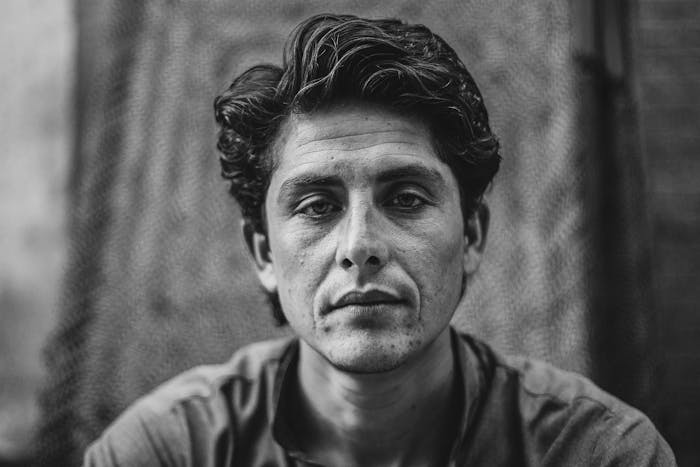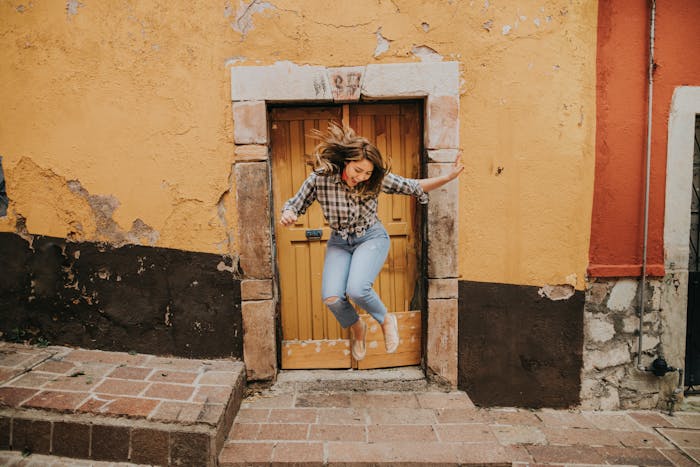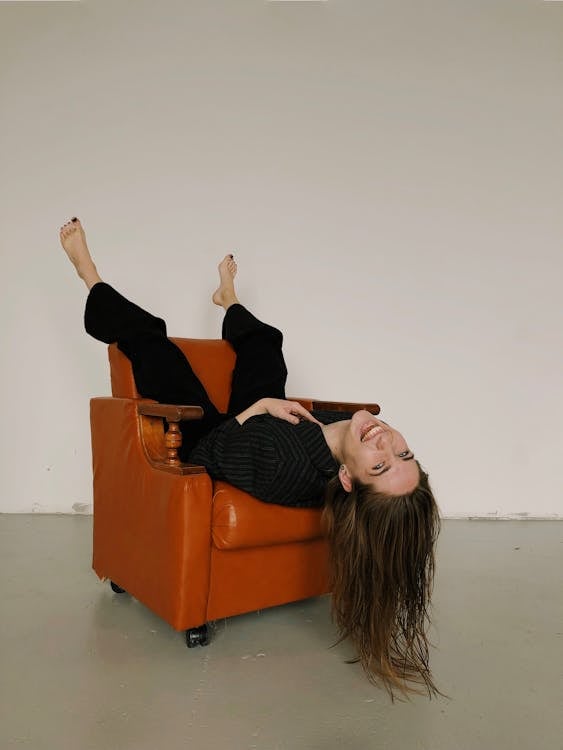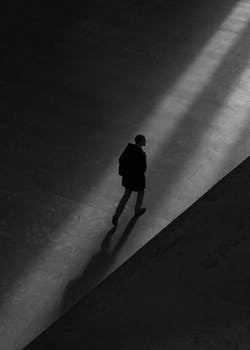
5 Tips for Photographing Real Emotion
How can you capture emotion in photos without it feeling overdone or fake?
This is a challenge that any portrait photographer knows all too well. Unless you only shoot documentary-style portraits or exclusively candids, a lot of the time you're going to be trying to capture feeling that your model might not really feel.
But a portrait with no feeling in it at all is likely going to look flat, inauthentic, forgettable.
You've got to bring some kind of emotion into every portrait shot to capture the viewer's attention. And then, even if you are shooting genuine feeling, capturing it right in the moment, how can you do that well and make sure it gets across to the viewer?
Well, there are two tried-and-true methods for capturing emotional images that you probably already know and use.
Portrait Idea 1: Zoom In
Number One is the Zoom In. Just as it sounds, you zoom way in and fill up the frame with the subject's face. This of course puts all the focus on how they're feeling, and it is indeed an effective way to create a highly emotional portrait.
Portrait Idea 2: Headshot
Number Two is the Headshot. This entails simply photographing your subject head-on, placing them squarely in the center of the frame, without any other visual interest around them. Like the Zoom In, it's an easy and failproof way to put focus on your subject's facial expression.

Now that's a portrait with feeling in it.
Photo by Aa Dil · View Photo
While these methods can result in gorgeous portraits (like our examples here!), these are far from your only options to putting the spotlight on emotion in your portrait photography.
These four simple techniques will help you bring more emotion that actually feels heartfelt into all your portraits — including lots of photo examples to inspire your next shoot.
Wondering how to find portrait photo subjects? Check out our guide.
Tip #1: Set the scene
While emotional portraits are often close-up captures, a well-chosen background can really help draw out the feeling depicted in any portrait.
You can easily add emotion to any photo by harnessing the power of the weather. A sunny day provides a happy background, while a dark, gloomy evening naturally lends itself to images with a sad or fearful feeling.
Nature is full of useful backdrops that can add emotion to your shots: surrounding your subject with flowers in bloom will make a portrait come alive, while placing them alone in an empty field works well to achieve a lonely image.

Standing alone on an empty road, with a dark sky behind her — the viewer gets a frightened feel from this photo subject.
Photo by Wildan Zainul Faki · View Photo
Shooting indoors also provides tons of opportunities to effectively set the scene for your portrait, amplifying the emotion you want to portray.
Think of your portrait as storytelling, and the environment in which your subject is photographed is a crucial part of the story. The room they're in can offer the viewer hints about their emotional state before they even see the person's facial expression.
For example, a person alone in a completely empty room can convey a more intense and dramatic feeling of loneliness than a close-up shot of their sad face would. Creative use of props and framing can help you achieve these kind of effects in your portraits.

Perched on a pedestal, this woman appears isolated and lonely.
Photo by Anna Shvets · View Photo
Tip #2: Pay attention to the lighting
Lighting is everything when it comes to documenting emotions. Playing around with the way light hits your subject’s face will create very different effects and moods.
For example, a person shrouded in darkness with just a ray of light on their face might convey a feeling of hope. A very dark portrait with only part of the subject visible will feel dramatic and mysterious, maybe sad or threatening.

While the person in this image appears defeated, the light shining down on them brings a sense of hope into the photo.
Photo by Min An · View Photo
A brightly illuminated portrait might highlight the happiness shown on a person's face... or it might contrast the sadness they're feeling. Keep in mind that while darker portraits often feel more dramatic or depressing, you can also use contrasting lighting to create an intriguing effect in your shot.
It's important, too, to pay attention to where light is directed in your portrait. Window light, for example, can help to bring a hopeful or thoughtful feeling into an image if you position the subject looking towards the window, or lit up with their back to it.

Photographing this happy pair on a sunny day outside helps their smiles really shine.
Photo by Anna Shvets · View Photo

With most of her face in shadow, the woman in this photo seems especially thoughtful, even a little sad.
Photo by Sinitta Leunen · View Photo
In general, darker images will tend to feel more dramatic and will work better for portraying negative emotions, while brighter-lit images will tend to have a positive feeling. You can always adjust this with editing after a shoot is done, but creating or finding the right lighting conditions during the shoot will make for a more powerful impact.
As we discussed above, finding a suitable outdoor location is a simple way to do this, but you can also use studio lighting to create the effect you're after.

We feel a sense of sadness (disappointment? loneliness?) from this photo subject, lit from the side by pale window light.
Photo by JESSICA TICOZZELLI · View Photo
Tip #3: Get creative with color
You know the sayings “seeing red” or “feeling blue”? Colors are linked to emotions, and you can use this to your advantage when shooting portraits.
Whether it’s with the backdrop you shoot against or how you adjust colors in post-processing, the colors in your image can help the viewer more strongly feel the emotion depicted. In general, the guidelines for using color to convey feeling are similar to how you make use of lighting.
Subdued, darker colors tend to feel, well, subdued. Blues, greys, dark green: darker and heavier colors will tend to bring a heavier feel to your images.

The raindrops combined with a sombre blue-grey color palette give this shoot a lonely feeling.
Photo by Khoa Võ · View Photo

Photo by Khoa Võ · View Photo
Just as darker colors will give your photos a darker feeling emotionally, light and bright colors can help bring a sense of joy and excitement to a happy image.
If you want your portrait to feel positive, consider incorporating yellows, oranges, reds, pinks, and other vibrant colors to amplify the cheery mood.

Not only is the subject in this portrait literally jumping for joy, they're doing it against an orange and yellow wall that provides a cheerful backdrop for an already happy shot.
Photo by José Luis Photographer · View Photo
Black and white provides a great option for shooting emotionally-charged portraits. It can give a deeper sense of sadness to an already sad portrait, and yet at the same time, black and white can also give contrast to the joy in a happy shot.

Shooting this happy couple in black and white gives gravity to what might otherwise be a too-cute portrait.
Photo by cottonbro studio · View Photo
Tip #4: Work closely with your portrait subject
Try getting creative with how you bring out emotion in your shoots by really working closely with your photo subjects. This often works best if you already know the person you’re photographing, but you can also create a bond with models you’re working with by making an effort to get to know them and make them comfortable.
Capturing negative emotions
For a sad shoot, you might ask your model to really think hard about a sad memory they experienced. Think of it as method acting! If you’re trying to capture anger, really encourage your model to feel that rage, maybe even scream at the camera.

Tell your model to really let loose and channel their inner anger for a emotional shot like this one.
Photo by Anna Tarazevich · View Photo

The despair in this photo feels very real: encourage your photo subject to summon up those feelings for an authentic shot.
Photo by Ketut Subiyanto · View Photo
Work with body language
Body language is so important here. A person who's sad, lonely, discouraged might:
- hang their head low,
- slouch their shoulders,
- look away from the camera.
While someone angry might stare straight ahead and throw back their shoulders in a more aggressive pose.
Try a wide range of dynamic poses to ensure you're capturing as much feeling as possible. The face only tells part of the story!
Capturing positive emotions
A happy, joyful person obviously has a smile on their face, but they might also be...
- jumping up and down,
- hugging someone else,
- throwing their hands in the air...
For a positive vibes shoot, try to get the model laughing and feeling good, maybe remembering a positive memory that brings a smile to their face.
Try to get your model feeling comfortable enough to play around with silly poses (upside down! making weird faces!) for a decidedly light-hearted photo.

Get goofy and encourage your model to try some funny poses for a joyful-feeling photo.
Photo by Maksim Goncharenok · View Photo

When your model feels at ease, it'll be apparent in your photos.
Photo by cottonbro studio · View Photo

Photo by cottonbro studio · View Photo
Tip #5: Try candid captures
So far, we’ve discussed some simple ways to bring more authentic emotional feeling into your portrait shoots. But you can also go back to basics and try shooting candid snaps to truly capture honest-to-goodness, 100% real emotion in the moment.
Bring your camera everywhere you go
Our top tip for this is to simply start bringing your camera around friends and family whenever possible — with their permission, of course!

Laughter is a sure way to bring an authentic vibe to any portrait.
Photo by Savannah Dematteo · View Photo

Your closest friends are great candidates for portrait models that capture real feeling, like this shot.
Photo by Ralph Rabago · View Photo
Always ask permission first
Let your loved ones know you’re working on photographing people, and get used to snapping when you see a strong emotion on someone’s face. You’ll likely find it’s easy to capture positive emotions as you simply spend time paying attention to those you already know well interacting.
Build trust to get those serious shots
We don’t advise whipping out the camera during truly sad moments, but if you spend lots of time photographing those close to you, you’re sure to capture some negative emotions too. For some practice, you might see if some friends are up for watching a sad or scary movie and having you photograph their responses.
Get creative and build trust by being sure to communicate lots with those you’re photographing, show them your shots, and be willing to re-shoot or delete if they really, truly hate the photo. Photographing other people is a kind of collaboration, and your subjects’ inputs are valuable.
Cover photo by Guilherme Almeida.
Pexels is a platform for high quality stock photos you can use for free.
Browse free photos










